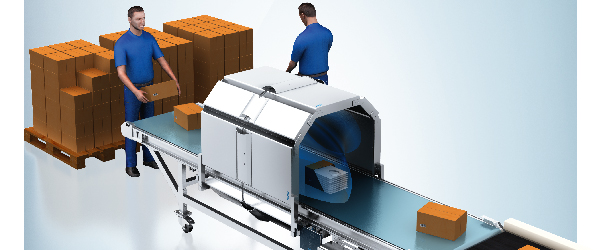RFID is quickly gaining ground as a leading method for automatic identification in logistics and manufacturing around the globe. RFID has been used for years for everyday activities as simple as entry to your workplace, and to track your tolls as you drive down the highway. But it is also a common method for tracking goods, people, and machines in distribution and manufacturing environments.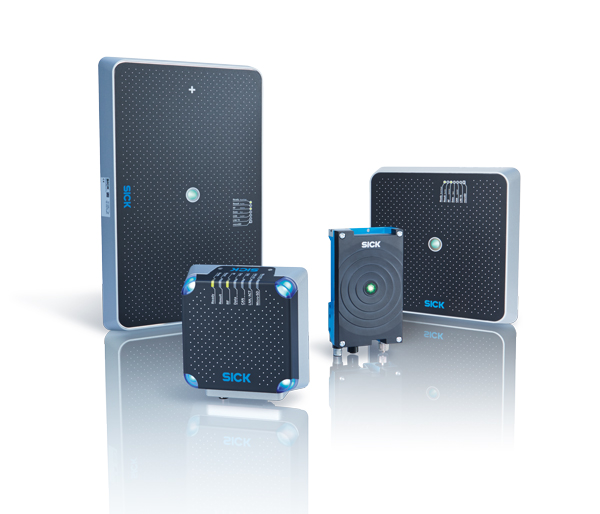
Historic Technologies
Only a few years ago RFID was considered an expensive alternative to laser- and camera-based data capture technologies, and the cost and risk of implementation outweighed the benefits for most users. Today, the situation has changed considerably. More retailers are recognizing the benefits. The tagging of individual items, pallets and cases add a new layer of dynamic information that travels and changes with an item as it’s moved through the chain. Further the cost of RFID tags has dropped to less than $0.10 apiece, and the performance and reliability of the systems has improved substantially.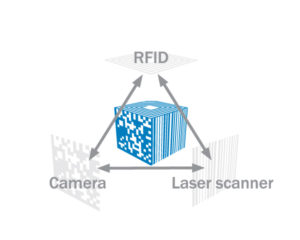
Trending
Current trends show a dramatic increase in the use of RFID. It’s used in receiving and shipping applications to verify goods bulk packed and in individual pieces, and it accommodates a much broader product mix including garments and apparel. RFID technology offers a long list of benefits. Using this technology enables retailers to improve the efficiency of receiving and shipping processes, increase order accuracy, achieve real-time visibility, and monitor product availability more closely. For retailers, the boost in visibility is crucial for creating enhanced customer experiences and for competitive advantage in the omni-channel environment. In addition to improving customer satisfaction it’s also a necessary tool for predicting process state to enable more predictive analysis of operational effectiveness.
Challenges
Adoption is widespread, but challenges exist as users make the transition:
- Tag filtering can be configured so only the right data from the right item is captured.
- Systems can be easily integrated including software and parameterization that is unique to each application.
- Hybrid solutions combine the best of bar coding and RFID.
- Direction of travel makes a difference…so it’s useful to know where a tagged item is between points A and B.
- High speed conveyance with small gaps is a requirement to maximize throughput.
- And…product mix and seasonality can be addressed.
Better Transparency in a Variety of Applications
Here are a few applications examples–
RFID can be used much the same way as traditional barcode scanners….reader identifies item with RFID tag….and the data is evaluated for a control decision to be made.
Data is written to a tag on the base of a pallet….then a reader attached to the forklift is able to identify the correct pallet and all contents associated with the tag to make sure it is properly routed.
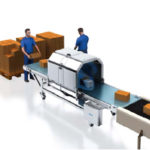 With an RFID based tunnel system at your receiving areas you’ll always know where the goods are. This system reads the RFID tags continuously and fully automatically – even for objects that are close together on the conveying line. Gain visibility into cartons and verify content and quantity without having to break down any packaging.
With an RFID based tunnel system at your receiving areas you’ll always know where the goods are. This system reads the RFID tags continuously and fully automatically – even for objects that are close together on the conveying line. Gain visibility into cartons and verify content and quantity without having to break down any packaging.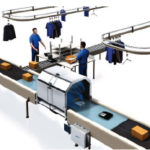
Since shipment verification is critical to ensuring customer satisfaction, make sure that your customer receives exactly what was ordered using an RFID tunnel system. This system ensures that those goods that were ordered are delivered to minimize expensive returns.
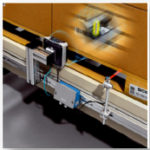 Compact RFID read/write devices optimized for logistics feature an integrated antenna and a definable reading field. This ensures RFID tags can be assigned correctly even when objects follow one another in quick succession.
Compact RFID read/write devices optimized for logistics feature an integrated antenna and a definable reading field. This ensures RFID tags can be assigned correctly even when objects follow one another in quick succession.
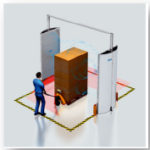 Gated RFID track and trace systems are available for quality and productivity increases in goods receipt and goods issue in warehouses. Reading of RFID transponders is fully automatic and interruption-free. Object, speed and direction detection enable unique assignment of RFID transponders.
Gated RFID track and trace systems are available for quality and productivity increases in goods receipt and goods issue in warehouses. Reading of RFID transponders is fully automatic and interruption-free. Object, speed and direction detection enable unique assignment of RFID transponders.


